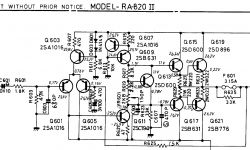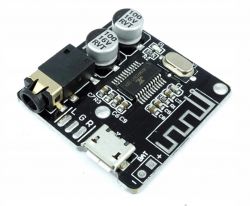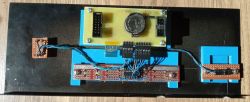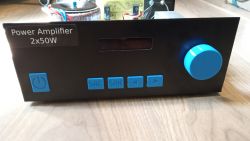
Hello, inspired by the designs presented on the forum, I decided to build my own amplifier, the project is strongly based on
Mosfet 2x50W amplifier with atTiny driver and remote control the heart of which is a power amplifier copy of the Rotel RA-820.
The diagram of the whole is not as clear as I would like, but you can see what it is connected with.
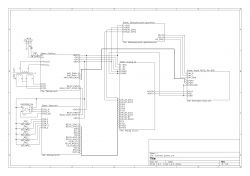
Power amplifier
Copy of ROTEL RA-820 or "hajend for the poor" on BD911 / BD912 transistors and here I have to mention my problems with this design. I managed to burn the power transistors twice, once setting the quiescent current and the second time connecting the signal source with the amp on, which was not the smartest thing. I got the impression that the system is very sensitive to mistreatment, according to front247 Poor quality transistors can cause these problems.
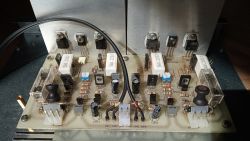
Power Supply
The driver and preamplifier are powered by a small 2x9V 10VA transformer that is on all the time. The voltage is stabilized at +/- 5VA to power the digital potentiometer and the preamplifier circuit, additionally by a + 5VD choke to power the digital part and relays. Unfortunately, I underestimated the power lost on this stabilizer and had to put it on a separate heat sink outside the PCB. The relays consume 300mA, which with 9V put on the stabilizer gives 2.7W, it would be better to power the relays from 12V, then with stabilization you would lose only 0.26W
A 2x27V 120VA transformer with two pairs of 10000uF capacitors was used to power the power amplifiers. Relay K1 turns on the power, and K2 closes the soft start resistors, both relays are controlled by the uC.
The tile was designed so that it could be mounted vertically as in the project of my colleague Katakrów, but in the end I had no idea how to do it without using wood.
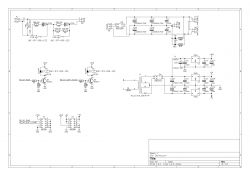
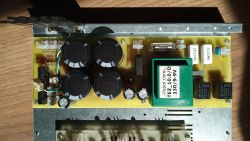
Preamplifier
The board with the input selector, digital potentiometer and radio modules allows switching between four signal sources, AUX 1, AUX 2, Bluetooth and radio. Bluetooth implemented on the XS3868 module is turned on only after selecting it as the source, you can jump between songs with the right / left buttons. I tried to change the name and password with uC, unfortunately to no avail. OVC3860 is a nice and cheap module, which can be used as a standalone module or with AT commands to change songs, volume, etc. but changing such a basic thing as the name requires a lot of effort, I do not understand why it could not be done from AT commands. Out of curiosity, I checked how much I gave the external antenna, without the RSSI -90 antenna, with the RSSI -55 antenna at a distance of 1m. FM radio on the TEA5767 module, the frequency is changed with the right / left buttons. The CS3310 digital potentiometer with a preamplifier and a set of filters is taken from the project of my colleague Katakrow, I only changed the amplifier to NE5532. The program does not use the chip amplifier section.
The common ground for the digital and analog parts is the spout on the top PCB layer; I was not sure if it was a good idea, especially since the lack of space did not allow me to arrange the individual modules in an optimal way, but the whole thing works very well, I can not hear any interference from the digital part.

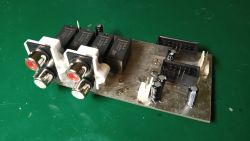
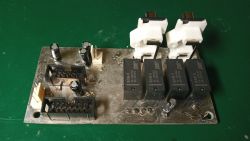
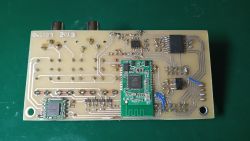
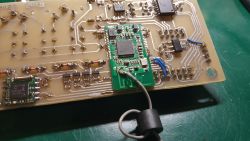
Speaker protection
DC component protection connected to the speaker output selector, banana connectors are screwed directly to the board. Unfortunately, sometimes the speaker connectors do not touch, the counter nuts are missing, it should be done as shown in the picture.
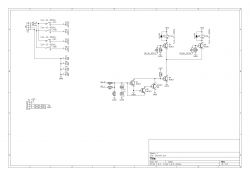
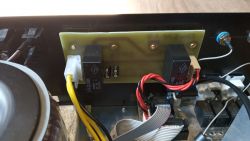
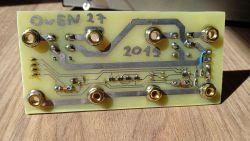

Controller
The driver is based on the STM32F100C8T6B microcontroller, of course there is no need to use a 32 bit processor, I chose it to gain experience with STMs. There were plans for a remote control on NRF24L01 modules, which never happened. The blue OLED 16x2 display looks very nice, after two years I did not notice any burned-in pixels, so also a plus. The volume and I / O selector settings are stored in the built-in volatile memory with a 2032 battery, which eliminated the need to detect a power failure. There is terrible tinkering on the tile, it works but it looks disgusting, next time I would outsource it to a tile mill.
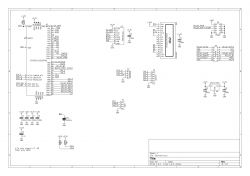
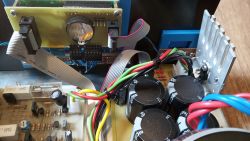
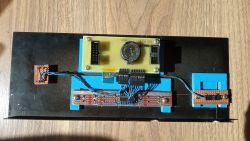
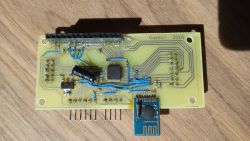
Housing
T-268, it was tighter than I expected, the transformer had to be placed above the power supply board, there was nowhere else to go. The advantage of the housing is certainly its width, at 260mm it fits into narrow cabinets. The buttons and the potentiometer knob are made of PLA, together with the blue OLED they contrast nicely with the black casing.
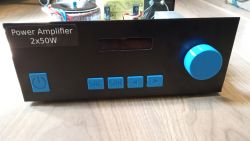
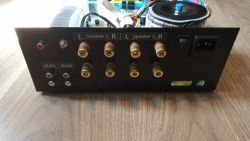
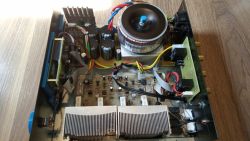
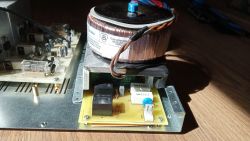
Summary
The amplifier has been working without any major problems for two years, sometimes the program freezes and this is where the switch on the back comes in handy
After moving, he began to hum softly, he probably does not like the new apartment
Cool? Ranking DIY






